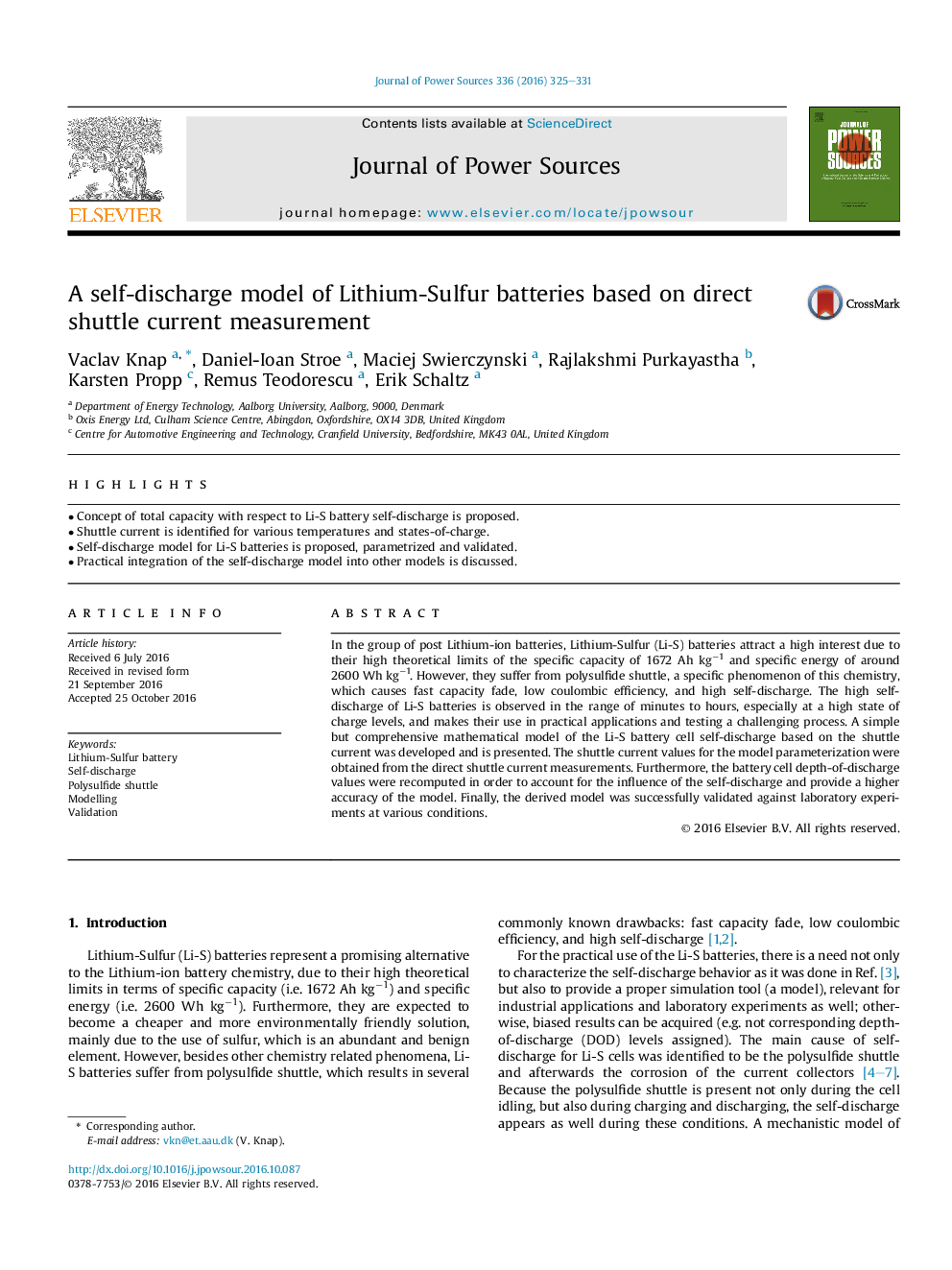| Article ID | Journal | Published Year | Pages | File Type |
|---|---|---|---|---|
| 5149927 | Journal of Power Sources | 2016 | 7 Pages |
Abstract
In the group of post Lithium-ion batteries, Lithium-Sulfur (Li-S) batteries attract a high interest due to their high theoretical limits of the specific capacity of 1672 Ah kgâ1 and specific energy of around 2600 Wh kgâ1. However, they suffer from polysulfide shuttle, a specific phenomenon of this chemistry, which causes fast capacity fade, low coulombic efficiency, and high self-discharge. The high self-discharge of Li-S batteries is observed in the range of minutes to hours, especially at a high state of charge levels, and makes their use in practical applications and testing a challenging process. A simple but comprehensive mathematical model of the Li-S battery cell self-discharge based on the shuttle current was developed and is presented. The shuttle current values for the model parameterization were obtained from the direct shuttle current measurements. Furthermore, the battery cell depth-of-discharge values were recomputed in order to account for the influence of the self-discharge and provide a higher accuracy of the model. Finally, the derived model was successfully validated against laboratory experiments at various conditions.
Related Topics
Physical Sciences and Engineering
Chemistry
Electrochemistry
Authors
Vaclav Knap, Daniel-Ioan Stroe, Maciej Swierczynski, Rajlakshmi Purkayastha, Karsten Propp, Remus Teodorescu, Erik Schaltz,
